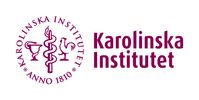Fibroblasts in the penis are more important for erectile function than previously thought
Regular erections could be important for maintaining erectile function, according to a new study on mice published in Science by researchers at Karolinska Institutet. “We discovered that an increased frequency of erections leads to more fibroblasts that enable erection and vice versa, that a decreased frequency results in fewer of these cells,” says principal investigator Christian Göritz.
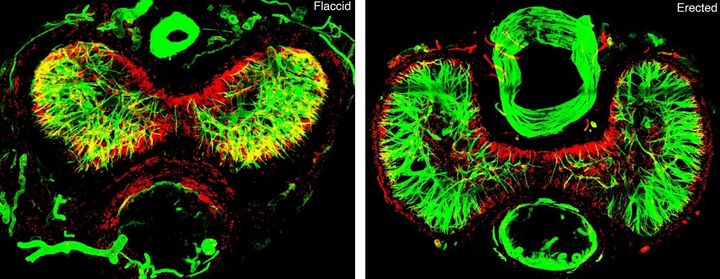
In a new study on mice, researchers at Karolinska Institutet and Uppsala University in Sweden show that connective tissue cells called fibroblasts have a previously unknown and very important function in mediating erection.
“Fibroblasts are the most abundant cells in the penis of both mice and humans, but they have been neglected in research,” says Eduardo Guimaraes, researcher at the Department of Cell and Molecular Biology at Karolinska Institutet and first author of the paper. “Now we can show, using a very precise method called optogenetics, that they have a very important role in regulating blood flow in the penis, which is what makes the penis erect.”
The study shows that fibroblasts mediate erection by taking up the neurotransmitter noradrenaline, which leads to the widening of blood vessels in the penis. How effective this process is depends on the number of fibroblasts.
The body adapts
The researchers were also able to show that the number of fibroblasts in the penis is affected by the frequency of erections. The more frequent the more fibroblasts and vice versa; a lower frequency of erections reduced the number of fibroblasts.
“It’s not so strange really. If you exert yourself a lot, your body adapts. If you run regularly, it will eventually become easier to breathe while running,” says Christian Göritz, senior researcher at the Department of Cell and Molecular Biology at Karolinska Institutet, who led the study.
In terms of what conclusions can be drawn for humans from studies on mice, Christian Göritz says that in this case there are significant similarities.
“The basic mechanisms of erection are very similar in all mammals regarding anatomy, cell structure and so on,” he says. “However, there is one difference between humans and most mammals – they have a bone in their penis. This means that effective blood flow regulation is probably even more important for human reproduction.”
Fewer fibroblasts with age
Older mice had fewer fibroblasts in the penis, which was also reflected in lower blood flow. The ability to get an erection decreases with age also in humans, which could be partly due to fewer fibroblasts in the penis. The researchers therefore believe that it could be possible to train the ability to get an erection to counteract impotence in the same way as you can train your strength or fitness at the gym.
“This is not something we have shown in our study, so it is a bit speculative, but a reasonable interpretation is that it gets easier if you have regular erections,” says Christian Göritz.
He hopes that the new knowledge of the role of fibroblasts in erection may also lead to new treatments for erectile dysfunction.
The research was mainly funded by the Bertil Hållsten Foundation and the Knut and Alice Wallenberg Foundation. There are no reported conflicts of interest.
Facts: Erectile dysfunction, or impotence, affects between 5 and 20 per cent of all men, with the incidence increasing with age. Erectile dysfunction often negatively affects the quality of life and physical and psychosocial health, both for the patient and their family. Common risk factors, apart from age, are similar to those for cardiovascular disease: inactivity, obesity, hypertension, smoking, high cholesterol levels and metabolic syndrome. Source: Region Stockholm knowledge support Viss.nu.
Publication: "Corpora cavernosa fibroblasts mediate penile erection", Eduardo Linck Guimaraes, David Oliveira Dias, Wing Fung Hau, Anais Julien, Daniel Holl, Maria Garcia-Collado, Soniya Savant, Evelina Vågesjö, Mia Phillipson, Lars Jakobsson, Christian Göritz. Science, online 8 February 2024, doi: 10.1126/science.ade8064.
Contacts
For more information, please contact:
Christian Göritz, senior researcher
Department of Cell and Molecular Biology, Karolinska Institutet, Sweden
E-mail: christian.goeritz@ki.se
Phone: +46-(0)8-524 873 64
Images

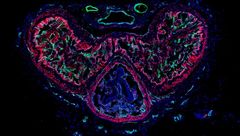
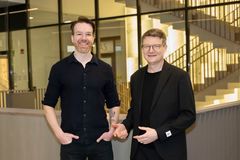
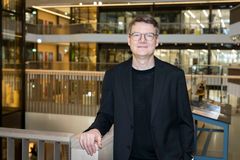

Karolinska Institutet (https://ki.se/en) is one of the world’s leading medical universities. Our vision is to advance knowledge about life and strive towards better health for all. Karolinska Institutet accounts for the single largest share of all academic medical research conducted in Sweden and offers the country’s broadest range of education in medicine and health sciences. The Nobel Assembly at Karolinska Institutet selects the Nobel laureates in Physiology or Medicine.
Subscribe to releases from Karolinska Institutet - English
Subscribe to all the latest releases from Karolinska Institutet - English by registering your e-mail address below. You can unsubscribe at any time.
Latest releases from Karolinska Institutet - English
Very early medication abortion is effective and safe6.11.2024 23:00:00 CET | Pressmeddelande
Clinics and hospitals currently defer medication abortion until ultrasound confirms a pregnancy inside the uterus. However, a large international study led by researchers from Karolinska Institutet now indicates that treatment can be equally effective and safe even before the sixth week of pregnancy. The study is published in The New England Journal of Medicine.
The 2024 Nobel Prize in Physiology or Medicine jointly to Victor Ambros and Gary Ruvkun7.10.2024 12:15:58 CEST | Press Release
The Nobel Assembly at Karolinska Institutet has today decided to award the 2024 Nobel Prize in Physiology or Medicine jointly to Victor Ambros and Gary Ruvkun for the discovery of microRNA and its role in post-transcriptional gene regulation.
Announcement of the Nobel Prize in Physiology or Medicine 202426.9.2024 17:00:00 CEST | Pressinbjudan
The Nobel Prize will be announced on Monday 7 October 2024 at 11.30 am (at the earliest).The announcement will be open only for media representatives who have been accredited in advance.
Breaking the trend: Skin cancer incidence in young adults declines9.9.2024 00:05:00 CEST | Pressmeddelande
The risk of skin cancer for adults under the age of 50 is now decreasing for the first time in Sweden, according to a study from Karolinska Institutet published in JAMA Dermatology.
New research explains differences between men's and women's immune systems4.9.2024 17:00:00 CEST | Pressmeddelande
In a recent study published in Nature, Swedish researchers demonstrate the role of sex hormones in regulating the immune system. This newfound knowledge explains differences between men and women and can be used to develop new immunological medications according to researchers.
In our pressroom you can read all our latest releases, find our press contacts, images, documents and other relevant information about us.
Visit our pressroom